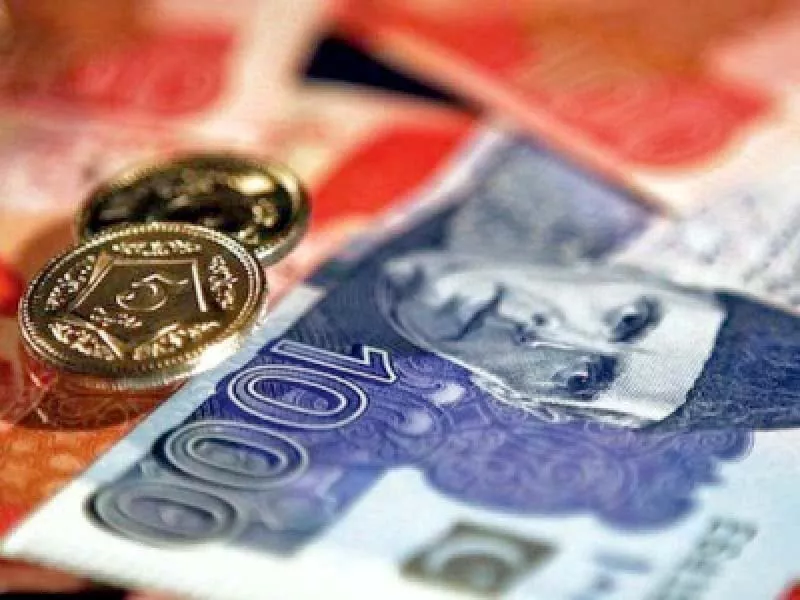Despite Covid impact, rupee stays strong vs dollar
Pakistani currency strengthened 6.2% to stand at 157.54 at end of FY21
KARACHI:Pakistani rupee showed strong resistance against the US dollar during fiscal year 2020-21 despite serious repercussions of Covid-19 for the national economy.
The local currency appreciated by 6.2% against the greenback between July 1, 2020 and June 30, 2021.
On Wednesday - the last day of the fiscal year - the rupee traded at Rs157.54 to a dollar compared to Rs168.05 on June 30, 2020, translating into its strengthening by Rs10.51.
During FY21, the government introduced strict rules to curb money laundering and its efforts yielded positive results as dollar smuggling shrank, leading to an increase in inflows through legal channels.
In fiscal year 2020-21, Pakistan successfully raised $2.5 billion through the sale of five to 30-year Eurobonds in the international market and the International Monetary Fund (IMF) resumed its loan programme worth $6 billion, which played the role of a catalyst in the rupee’s uptrend.
“Keeping in view the current economic situation and dynamics, the appreciation of the rupee is in line with market expectations,” Alpha Beta Core CEO Khurram Schehzad said while speaking to The Express Tribune.
The expected receipt of next IMF loan tranche, new financing from other global financial institutions, improvement in workers’ remittances and a nominal current account deficit together will support the rupee to stay firm in FY22.
However, a projected uptick in demand for the dollar to pay for increasing imports and repay foreign debt may pile pressure on the rupee on and off in the new fiscal year.
“The rupee is expected to depreciate by around 4-5% during fiscal year 2021-22,” Arif Habib Limited (AHL) Head of Research Tahir Abbas said, adding that the depreciation would help the currency to stay competitive compared to other currencies.
During FY21, the rupee hit an all-time low of Rs168.43 against the US dollar in the inter-bank market on August 26, 2020 due to the international payment pressure.
It also touched the year’s high of Rs152.27 against the greenback in May 2021 on the back of increased inflow of workers’ remittances. Remittances surged 33.5% to $2.5 billion in May 2021 compared to the same month of last year as they continued to stay at elevated levels above $2 billion for a record 12th month in a row.
Use of formal channels by overseas Pakistanis to send money back home, restricted cross-border travel in the wake of Covid-19 and altruistic transfers to Pakistan amid the pandemic fuelled the rise in inflows, which resultantly impacted the rupee-dollar parity positively, Abbas added while quoting the State Bank.
Moreover, inflows through the Roshan Digital Account, a State Bank’s initiative to increase investment in the country, also lent support to the rupee. During the year under review, the State Bank’s foreign currency reserves surpassed the $16 billion mark, which also added fuel to the rupee’s uptrend.
“As Pakistan’s economy moves towards growth from the stage of stabilisation, we expect the rupee to perform in a somewhat similar manner even if the current account balance remains in deficit during the next fiscal year,” he added.
“Current account deficit is not a bad phenomenon if it is manageable.”
Endorsing his views, Schehzad said that volatility must be avoided. “We should ensure there is predictability and stability in the market because volatility is not good for the rupee-dollar parity.”
The rupee’s performance largely depends on investments, exports and remittances. Keeping in view the inflation gap between the United States and Pakistan, the rupee may experience annual average depreciation of 4-5% in the new fiscal year starting July 1.
Published in The Express Tribune, July 1st, 2021.
Like Business on Facebook, follow @TribuneBiz on Twitter to stay informed and join in the conversation.


COMMENTS
Comments are moderated and generally will be posted if they are on-topic and not abusive.
For more information, please see our Comments FAQ